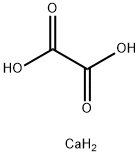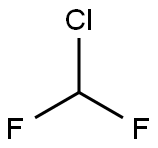Clodinafop-propargyl
Synonym(s):2-Propynyl (R)-2-[4-(5-chloro-3-fluoro-2-pyridinyloxy)phenoxy]propionate
- CAS NO.:105512-06-9
- Empirical Formula: C17H13ClFNO4
- Molecular Weight: 349.74
- MDL number: MFCD01632328
- SAFETY DATA SHEET (SDS)
- Update Date: 2025-01-27 09:38:02

What is Clodinafop-propargyl ?
Description
Clodinafop-propargyl is a foliar-absorbed aryloxyphenoxypropionate herbicide which has the capacity to inhibit the lipid biosynthesizing enzyme, acetyl coenzyme-A-carboxylase.
Clodinafop-propargyl is a member of the Oxyphenoxy acid ester chemical class, which includes the active ingredients fluazifop-butyl, fenoxaprop-ethyl, diclofop methyl, quizalofop-ethyl and haloxyfop-methyl.
Chemical properties
Pure Clodinafop-propargyl is colorless crystal, vapor pressure (25℃)3.19×10-3mPa, Solubility (25℃): water 4.0mg/L, ethyl alcohol 97 mg/L, acetone 880 mg/L, methyl benzene 690mg/L, n-hexane 0.0086 mg/L. Distribution coefficient (octane/water): KOWlogP=3.9(25℃). Clodinafop-propargyl can inhibit the synthesis of ester-like biology. It can be used to control amur foxtail, oat grass, avena sterilis, green bristlegrass and other weeds.
The Uses of Clodinafop-propargyl
Clodinafop-propargyl is a member of the aryloxyphenoxy propionate chemical family. It acts as a systemic herbicide that acts on post-emergent weeds such as selected grasses. It does not act on broad leaved weeds. It is applied to the foliar parts of the weeds and is absorbed through the leaves. This foliar acting grass weed killer is translocated to the meristematic growing points of the plant where it interferes with the production of fatty acids required for plant growth.Grass weeds controlled include wild oats, rough meadow-grass, green foxtail, barnyard grass, Persian darnel, volunteer canary seed. It also provides moderate control of Italian rye-grass. It is suitable for use on the following crops – all varieties of wheat, autumn-sown spring wheat, rye, triticale and durum wheat.
The Uses of Clodinafop-propargyl
Herbicides for weed control in wheat.
Definition
ChEBI: A carboxylic ester resulting from the formal condensation of the carboxy group of clodinafop with the hydroxy group of prop-2-yn-1-ol. It is widely used as a herbicide for the control of annual grass weeds in cereal crops.
Mode of action
Clodinafop-propargyl is to inhibit the activity of acetyl-CoA carboxylase in plants. It is a systemic conductive herbicide, absorbed by the leaves and sheaths of plants, transmitted by phloem, and accumulated in meristems of plants. In this case, acetyl-CoA carboxylase is inhibited, and fatty acid synthesis is stopped. So cell growth and division cannot proceed normally, and lipid-containing structures such as membrane systems are destroyed, leading to plant death.
Toxicity evaluation
a) Mammalian toxicity : WHO Classification : Class III slightly hazardous”
b) Environmental toxicity : It is non-toxic to fish, birds and bees.
Shelf life :Two years under normal storage conditions (Tech grade and Formulation)
Properties of Clodinafop-propargyl
| Melting point: | 48-57°C |
| alpha | D20 +45.4° (c = 2 in acetone) |
| Boiling point: | 432.7±45.0 °C(Predicted) |
| Density | 1.37 g/cm3(Temp: 22 °C) |
| storage temp. | 0-6°C |
| solubility | DMSO: 100 mg/mL (285.93 mM) |
| form | neat |
| pka | -1.54±0.32(Predicted) |
| form | Solid |
| color | Off-white to yellow |
| BRN | 8857008 |
| CAS DataBase Reference | 105512-06-9(CAS DataBase Reference) |
| EPA Substance Registry System | Propanoic acid, 2-[4-[(5-chloro-3-fluoro-2-pyridinyl)oxy]phenoxy]-, 2-propynyl ester, (2R)- (105512-06-9) |
Safety information for Clodinafop-propargyl
| Signal word | Warning |
| Pictogram(s) |
 Exclamation Mark Irritant GHS07  Health Hazard GHS08  Environment GHS09 |
| GHS Hazard Statements |
H373:Specific target organ toxicity, repeated exposure H410:Hazardous to the aquatic environment, long-term hazard |
| Precautionary Statement Codes |
P260:Do not breathe dust/fume/gas/mist/vapours/spray. P264:Wash hands thoroughly after handling. P264:Wash skin thouroughly after handling. P273:Avoid release to the environment. P314:Get medical advice/attention if you feel unwell. P301+P312:IF SWALLOWED: call a POISON CENTER or doctor/physician IF you feel unwell. |
Computed Descriptors for Clodinafop-propargyl
Clodinafop-propargyl manufacturer
Unique Farm Aid Pvt Ltd
Bhagiradha Chemicals And Industries Limited
HPM Chemicals And Fertilizers Ltd
New Products
p-Toluenesulfonyl hydrazide N-octanoyl benzotriazole 3-Morpholino-1-(4-nitrophenyl)-5,6-dihydropyridin- 2(1H)-one ELECTROLYTIC IRON POWDER 1,1’-CARBONYLDIIMIDAZOLE R-2-BENZYLOXY PROPIONIC ACID 4-HYDROXY BENZYL ALCOHOL 1,1’-CARBONYLDI (1,2-4 TRIAZOLE) 1-(2,4-DICHLOROPHENYL) ETHANAMINE 4-Bromopyrazole 1-Boc-4-cyanopiperidine 5-BROMO-2CYANO PYRIDINE 5,6-Dimethoxyindanone Cycloleucine 1-Aminocyclobutanecarboxylic acid 1-Amino-1-cyclohexanecarboxylic acid 1-(2-Ethoxyethyl)-2-(piperidin-4-yl)-1H-benzo[d]imidazole hydrochloride TETRABUTYLAMMONIUM CYANIDE Ethyl 2-cyano-2-(hydroxyimino)acetate (S)-1-Benzyl 2-methyl pyrrolidine-1,2-dicarboxylate 2-Amino-3-nitrobenzoic acid methyl ester N1,N2-Dibenzylethane-1,2-diamine 3-(4-Morpholinyl)aniline 4-methoxy-3,5-dinitropyridineRelated products of tetrahydrofuran








You may like
-
 105512-06-9 Clodinafop-propargyl 99%View Details
105512-06-9 Clodinafop-propargyl 99%View Details
105512-06-9 -
 Clodinafop-propargyl 99%View Details
Clodinafop-propargyl 99%View Details
105512-06-9 -
 Clodinafop-propargyl 97% (HPLC) CAS 105512-06-9View Details
Clodinafop-propargyl 97% (HPLC) CAS 105512-06-9View Details
105512-06-9 -
 Clodinafop-propargyl CAS 105512-06-9View Details
Clodinafop-propargyl CAS 105512-06-9View Details
105512-06-9 -
 Clodinafop-propargyl 105512-06-9 98%View Details
Clodinafop-propargyl 105512-06-9 98%View Details
105512-06-9 -
 105512-06-9 Clodinafop-propargyl 98%View Details
105512-06-9 Clodinafop-propargyl 98%View Details
105512-06-9 -
 Clodinafop-propargyl CAS 105512-06-9View Details
Clodinafop-propargyl CAS 105512-06-9View Details
105512-06-9 -
 Clodinafop-propargyl CAS 105512-06-9View Details
Clodinafop-propargyl CAS 105512-06-9View Details
105512-06-9